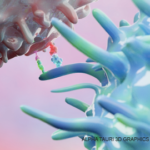The authors found that SLE, Crohn’s disease and EGPA all demonstrated abnormal isotype-specific clonal expansion or diversity and abnormal use of the IGHV genes, which would be consistent with the association of multiple antibodies as seen in these diseases. In addition, increased IgA isotype usage was seen in Crohn’s disease and in SLE, even though the latter was an unexpected finding given that IgG is implicated in pathogenesis for lupus and intestinal inflammation is not prominent.
These findings suggest that SLE, Crohn’s disease and EGPA may share drivers within the mucosal microbiome, given known IGHV affinities for microbial antigens.
RNA sequencing, in particular single-cell RNA sequencing, has become an extremely important tool in understanding the fundamental aspects of disease pathophysiology in the field of rheumatology.
Insights into the Major Histocompatibility Complex
Dr. Bucala also discussed work by Kamitaki et al. that explored complement as the possible missing genetic link for SLE and primary Sjögren’s syndrome.3 The team used whole-genome sequence data to identify variants of C4A and C4B (i.e., the two genes that encode for the complement protein C4) from more than 1,260 individuals to create a reference haplotype to impute C4 alleles from single-nucleotide polymorphisms in more than 6,700 patients with SLE and more than 11,500 controls.
In their paper, the authors noted that variation in the copy number of C4A and C4B was associated with seven times the difference in risk for SLE and 16 times the difference in risk for primary Sjögren’s syndrome. In addition, increased copy numbers for C4A and C4B were associated with protective effects for both diseases.
Given that the copy number variation of the C4 genes explains, at least in part, the genetic association in the MHC locus for SLE and primary Sjögren’s syndrome, this implies that the complement pathway is an important contributor to the development of these autoimmune disorders.
RA Progression & Relapse
Dr. Bucala concluded his lecture with a discussion of basic science advances with respect to rheumatoid arthritis (RA). In one study, Wei et al. used single-cell RNA sequencing and synovial tissue organoids to show that NOTCH3 and Notch target genes are markedly upregulated in synovial fibroblasts in active rheumatoid arthritis.4 These findings help shed light on what mechanisms help drive synovial expansion (i.e., pannus) in active RA.
In a separate study, researchers used single-cell transcriptomics to profile 32,000 synovial tissue macrophages to describe phenotypic changes in patients with early, active RA, treatment-refractory active disease and disease in sustained remission.5


